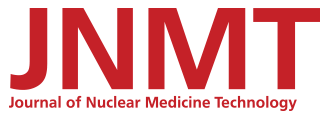
Cybil J. Nielsen MBA, CNMT President, SNMTS
Many within the nuclear medicine community have long been aware of the ongoing problem of the isotope shortage. When aging reactors in Canada and other parts of the world are shut down for maintenance or other reasons, the supply of 99Mo is interrupted. Because 99Mo has a short half-life and cannot be stockpiled, these interruptions affect patient access to critical procedures. As a technologist, you may have borne personal witness to delays or rescheduling of nuclear medicine procedures as a result of the shortage.
In fact, a recent SNM-commissioned survey reveals that more than 60% of radiopharmacies are affected by the shortage—leading to rescheduling of patient tests or a decrease in doses of 99mTc, which translates to longer scan times and potentially less optimal imaging studies. This is a problem that will not go away unless some action is taken to ensure that we have a domestic supply of 99Mo.
While it may be easy for technologists and physicians to recognize the severity of this problem, it may not be as apparent to others. Although the topic has received considerable widespread media coverage, it is still important to get the message across to the rest of the world, who may not be involved with nuclear medicine on a daily basis. As a steward of good practice in nuclear medicine technology, the SNM Technologist Section (SNMTS) has been active in taking steps to address the isotope crisis.
Recently, SNMTS launched a campaign to increase awareness of the medical isotope shortage to individuals not currently involved in nuclear medicine. Through this campaign, SNMTS seeks to foster questions and discussion from non–nuclear medicine professionals regarding the shortage and its effects on patient care. In addition, SNMTS hopes to gain support for the “American Medical Isotopes Production Act of 2009.” The purpose of the bill is to promote the production of 99Mo in the United States for medical isotope production and to phase out the export of highly enriched uranium for the production of medical isotopes.
SNMTS is also working on practical things that you, as a nuclear medicine technologist, can do to utilize the current supply of 99mTc to its fullest. For example, you can work with your radiopharmacy when it receives the greatest supply of 99mTc and schedule patients accordingly. Also, you can utilize alternative radiopharmaceuticals in place of 99mTc. For more information and for additional recommendations on dealing with the shortage, please visit the SNM Web site at www.snm.org and click on “Government Relations—Domestic Isotope Shortage.”
The campaign will include up-to-date information about the shortage, as well as strategies for coping with the shortage. We will also be providing information on ways in which you may contact your legislator to voice support of the American Medical Isotopes Production Act of 2009. By participating in this campaign, you will play an important role in educating others about the isotope crisis and voice your concern over this serious patient care issue. (More information about the campaign will be available on the SNMTS Web site in mid-November.)







